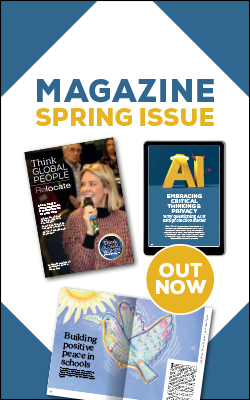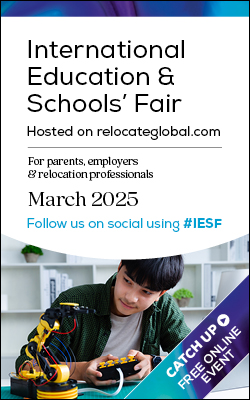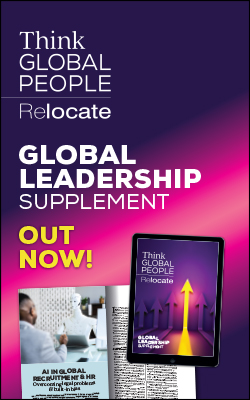The bigger picture in the USA: mobility professionals reflect
We look at how businesses in the US are responding to the change in government style at the White House and assess the implications for the global mobility sector and domestic relocation.

Decline in US manufacturing, increase in high-tech industries
In the last two decades, however, the country’s economy has changed fundamentally as heavy industries and labour-intensive manufacturing have declined and high-tech and internet-related industries have flourished.Says Mr Ng, “Technology giants, including Apple, Google, Facebook, Microsoft and Amazon, now make up a good number of the top ten companies by market valuation. Compare this list with the top companies in the early nineties: General Electric, Walmart, General Motors and Exxon.“The trend is clear: the emergence and importance of technology have changed America’s economic drivers. Traditional labour-intensive manufacturing industries are shifting towards the use of robotics, automation techniques and cutting-edge materials. Manufacturing in America is not dead; it just has to transform and adapt to changing times.”Service industries, adds Arden Ng, are seeing similar change – the self-service checkouts introduced by so many retailers being one example.All these transformations, he says, are possible because of existing infrastructure and know-how. Social media has disrupted the way in which consumers research and buy products and services. The sharing economy has disrupted the services industry. From hotels, taxis and food delivery to personal services, the key to success is building trust, speed and convenience.The US: competing for new market opportunities
However, as many commentators have observed, particularly in connection with the surprise result of last year’s presidential election and Mr Trump’s first few months in office, these transformations have come at the expense of the many ordinary Americans who feel left behind by globalisation and the digital economy.Highlighting a welcome fall in unemployment and rise in wages, the authors of a new McKinsey Global Institute report point out that these indicators can distract from the bigger picture. Tens of millions of workers are struggling to make it in America, they say, and even a full-time job does not guarantee a “decent” standard of living.
Seizing opportunities for global growth in US manufacturing
Among the “promising factors” for US manufacturers seeking opportunities for global growth, say the McKinsey report’s authors, are:- Rising consumption, and rising wages, in emerging markets
- Global value chains shifting as firms emphasise serviced-based business models and proximity to markets, suppliers and innovation partners
- The new world of digital manufacturing, which represents a shift towards high productivity and the agility needed to meet fragmenting demand. Technologies like the internet of things, analytics, advanced robotics, and 3-D printing are transforming factory floors into flexible, self-maintaining operations

Addressing skills shortages in the US economy
Skills shortages in some sectors of the US economy highlight the need for improved education and training if the country is not to become overreliant on labour from overseas.Atlas’s latest survey provides a snapshot of relocation and the challenges companies are facing in connection with it. It reveals that, in 2016, lack of local talent, reported by 44 per cent of respondents, was the factor most affecting relocation. It was followed by expansion efforts (43 per cent) and company growth (41 per cent).Shortages of local talent were a headache for firms of all sizes, with 40 per cent of large firms, 43 per cent of medium-sized firms, and 47 per cent of small firms citing them.Atlas’s findings don’t surprise Blueback Global’s Arden Ng. “While technology advancements are moving at a lightning pace, the social aspects have not caught up. America is still facing a homegrown talent shortage. Although the influx of foreign talent has helped to meet this shortage, the federal government will have to moderate this in tandem with its immigration policies.”Tom Atchison, CEO of National Corporate Housing, sounds a note of caution about new administration’s immigration agenda. “Business is constantly evolving, and this has historically played into America’s number-one strength: we are a nation of immigrants. Immigrants often risk everything to come to a new country and create a prosperous life. They are ‘wired’ to be optimistic, self-assured, creative, solution oriented and risk-takers. We are a diverse society that is able to harness the best of many cultures.”Aligning talent and mobility
Interestingly, the findings of global relocation services provider Cartus Corporation’s 2017 Domestic US Relocation Policy and Practices Survey were similar to those of the company’s 2009 survey as far as talent shortages were concerned. The majority of respondents said that they were either seeing no increase in talent shortages or that talent pressures had increased only “somewhat”.In the 2017 survey’s findings, targeted recruitment replaced offering sign-on bonuses as the strategy most often used to deal with talent shortages, though the latter still took second place. Intensified campus recruiting, more focus on intern programmes, enriching relocation packages on a case-by-case basis and/or approving exceptions, and offering short-term or temporary assignments, were other methods used to overcome talent shortages.Related articles from the Autumn issue of our magazine:
- Ensuring a globally mobile workforce
- Global mobility and immigration facing perfect storm: GXP Summit
- Global mobility programmes and compliance: latest trends
Toronto-based global relocation management company TheMIGroup has observed a shift in assignee-selection techniques. Says marketing manager Kelly Jesson, “Traditionally, the assessment process was performed behind the scenes; HR would select possible candidates from a talent pool, assess their suitability for an assignment, and then hand off the selected assignee to global mobility to begin the pre-departure training and administration.“Of late, more companies are seeing the value in introducing global mobility earlier in the process, creating a collaborative approach that improves the chances of success, increasing the efficiency of the overall process. Global mobility professionals have the most comprehensive understanding of the classic assignee ‘red flags’, and can help identify whether these barriers are surmountable, or can risk jeopardising the success of the assignment.“The incorporation of successful candidate assessment strategies is not just applicable to relocation, but can have a positive spillover effect into other components of talent management, such as evaluating an employee’s overall capacity to develop within a company, which effects recruitment and business planning.”
HR driving business value
A recent article by members of global management consultancy McKinsey’s US team features insights into how HR can move away from its traditional focus on operational matters and take its place at the decision-making table.This is, of course, a debate that has been raging for some years, but the authors of The CEO’s Guide to Competing Through HR believe that the time is now right to “accelerate the reinvention of HR as a hard-edged function capable of understanding the drivers of strategy and deploying talent in support of it – most importantly as a result of the availability of new technological tools that unleash the power of data analytics”.To advance the agenda, the authors suggest, businesses need to:- Rethink the role of HR business partners – Senior HR people who advise on talent issues must “stop acting as generalists and show that they really own the critical talent asset”
- Use people analytics to identify talent actions that drive value – A recent McKinsey survey of North American CEOs highlights that, although many organisations already have extensive analytics capabilities, they lack the ability to embed analytics into HR processes consistently and use their predictive power to drive decision-making
- Rethink HR operations so they are not a distraction from HR’s “higher mission” – This involves raising service levels and improving the employee experience, using next-generation automation tools and standardised processes to drive productivity
- Support the new priorities by deploying HR resources in more agile ways – Operationally, HR functions need to be able to create a “solid backbone” of core processes that “either eliminate the clutter or camouflage the complexity to the business”, while delivering the basics, such as payroll, benefits, recruitment, and simple employee and manager transactions
A new mobility trend for employers to juggle
The Cartus survey identified another element that employers must juggle when trying to ensure they have the right people to the right places to meet organisational goals. Previously, employers had to balance demands for cost effectiveness with the need to recruit, retain, and develop talent. Now, they must also consider employees’ growing expectations of a positive experience, as this results in greater engagement and productivity.This combination of demands, explains Cartus’s senior VP, Mark Sonders, is creating a new trend: a push for more flexibility in how employees move for work and in the kinds of support their employers provide.“The traditional pattern used to be that companies would move employees on sequential, multi-year moves from one place to another, with everyone expecting basically the same sort of support,” Mr Sonders says. “While those permanent moves are still prominent in companies’ approaches to relocation, an increasingly complex set of demands is driving companies to come up with more flexible approaches.”Short-term and temporary assignments have always been a part of the US relocation experience, says Mark Sonders. Their use now is a reflection of companies’ need to build more flexibility into how they handle employee relocation, while balancing demands for cost control, talent development, and the employee experience.Changing demographics – including the advent of Millennials and employees who are working well into their later years – and continuing cost-control pressures mean that companies need new approaches and new technologies to deliver customised support for employees moving for their jobs.Says Randy Wilson, CEO of NEI Global Relocation, “Over the last two years, we have seen a growth of nearly 25 per cent in our global business, which includes an array of destination services to assist employees and their families in acclimating to their new area.“Five years ago, destination services were not offered as a standard benefit. When they were offered, it was typically as an abbreviated service for half a day, or maybe a full day. Now, they are typically a standard benefit, and services have expanded to provide assistance for two to three days.”The last word goes to National Corporate Housing’s Tom Atchison. “The US is fortunate to have an abundance of resources, but none is more important than our people and the opportunity to achieve success. In the future, as in the past, we will experience talent shortages in certain industries and geographies as our society adjusts to the ever-changing world of technology and automation.”
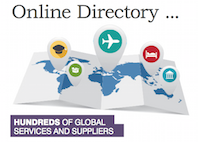 Get access to our free Global Mobility Toolkit
Get access to our free Global Mobility Toolkit 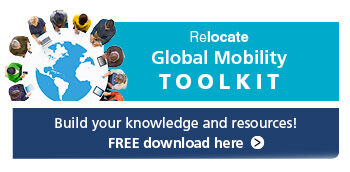 © 2017. This article first appeared in the Autumn 2017 edition of Relocate magazine, published by Profile Locations, Spray Hill, Hastings Road, Lamberhurst, Kent TN3 8JB. All rights reserved. This publication (or any part thereof) may not be reproduced in any form without the prior written permission of Profile Locations. Profile Locations accepts no liability for the accuracy of the contents or any opinions expressed herein.
© 2017. This article first appeared in the Autumn 2017 edition of Relocate magazine, published by Profile Locations, Spray Hill, Hastings Road, Lamberhurst, Kent TN3 8JB. All rights reserved. This publication (or any part thereof) may not be reproduced in any form without the prior written permission of Profile Locations. Profile Locations accepts no liability for the accuracy of the contents or any opinions expressed herein.










